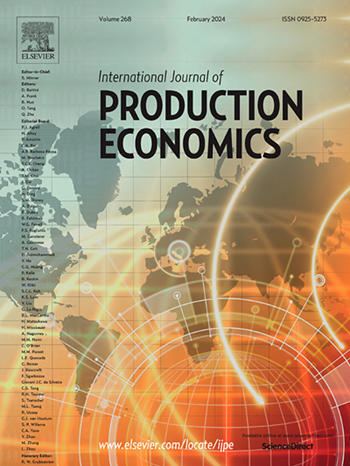Cold storage, warm breaks: The effects of rest breaks on order picking performance in cold-storage environments
IF 9.8
1区 工程技术
Q1 ENGINEERING, INDUSTRIAL
引用次数: 0
Abstract
Cold-storage systems are essential components of cold supply chains. Although order picking technologies have advanced, many of these systems still rely on human labour, where workers are exposed to temperatures below −20 °C. Despite wearing protective clothing, prolonged exposure to such cold conditions can lead to cold stress, causing physiological impairments and fatigue, which ultimately reduce performance. Warm rest breaks are crucial to mitigate these adverse effects and maintain productivity. However, there is a dearth of field evidence on the effect of the timing and duration of these breaks on order picking performance. To address this gap, we collaborated with a grocery retailer to examine the impact of rest-break durations on the performance of order pickers in a cold-storage environment set at −21 °C. We analysed 514,953 visits to storage locations by 40 order pickers over four months, using a multilevel model with random intercepts and slopes. Our findings revealed a horizontal S-shaped relationship between work time after a break and order picking time, characterised by an initial increase, a stabilisation period, and then a sharp increase. The results suggest that there is an optimal working period following a rest break during which performance peaks before it begins to decline. This period varies depending on the length of the break, highlighting the importance of strategic scheduling to maximise order picking efficiency in cold-storage environments.
冷库、冷暖休息:冷库环境下休息休息对订单采摘绩效的影响
冷库系统是冷供应链的重要组成部分。尽管拣货技术已经取得了进步,但其中许多系统仍然依赖于人工,工人暴露在零下20°C以下的温度下。尽管穿着防护服,但长时间暴露在如此寒冷的环境中会导致冷应激,导致生理损伤和疲劳,最终降低表现。温暖的休息对于减轻这些不利影响和保持生产力至关重要。然而,缺乏现场证据的时间和这些休息的持续时间对订单挑选性能的影响。为了解决这一差距,我们与一家杂货零售商合作,研究了在- 21°C的冷藏环境中,休息时间对订单采摘器性能的影响。我们使用具有随机截距和斜率的多层模型,分析了40名订单挑选者在四个月内对存储地点的514,953次访问。我们的研究结果显示,休息后的工作时间和挑选订单的时间之间呈水平s型关系,其特征是初始增加,稳定期,然后急剧增加。研究结果表明,在休息之后有一个最佳的工作时间,在此期间,表现在开始下降之前达到顶峰。这段时间取决于休息时间的长短,强调了战略调度的重要性,以最大限度地提高冷库环境中的订单挑选效率。
本文章由计算机程序翻译,如有差异,请以英文原文为准。
求助全文
约1分钟内获得全文
求助全文
来源期刊
CiteScore
21.40
自引率
7.50%
发文量
266
审稿时长
52 days
期刊介绍:
The International Journal of Production Economics focuses on the interface between engineering and management. It covers all aspects of manufacturing and process industries, as well as production in general. The journal is interdisciplinary, considering activities throughout the product life cycle and material flow cycle. It aims to disseminate knowledge for improving industrial practice and strengthening the theoretical base for decision making. The journal serves as a forum for exchanging ideas and presenting new developments in theory and application, combining academic standards with practical value for industrial applications.

 求助内容:
求助内容: 应助结果提醒方式:
应助结果提醒方式:


